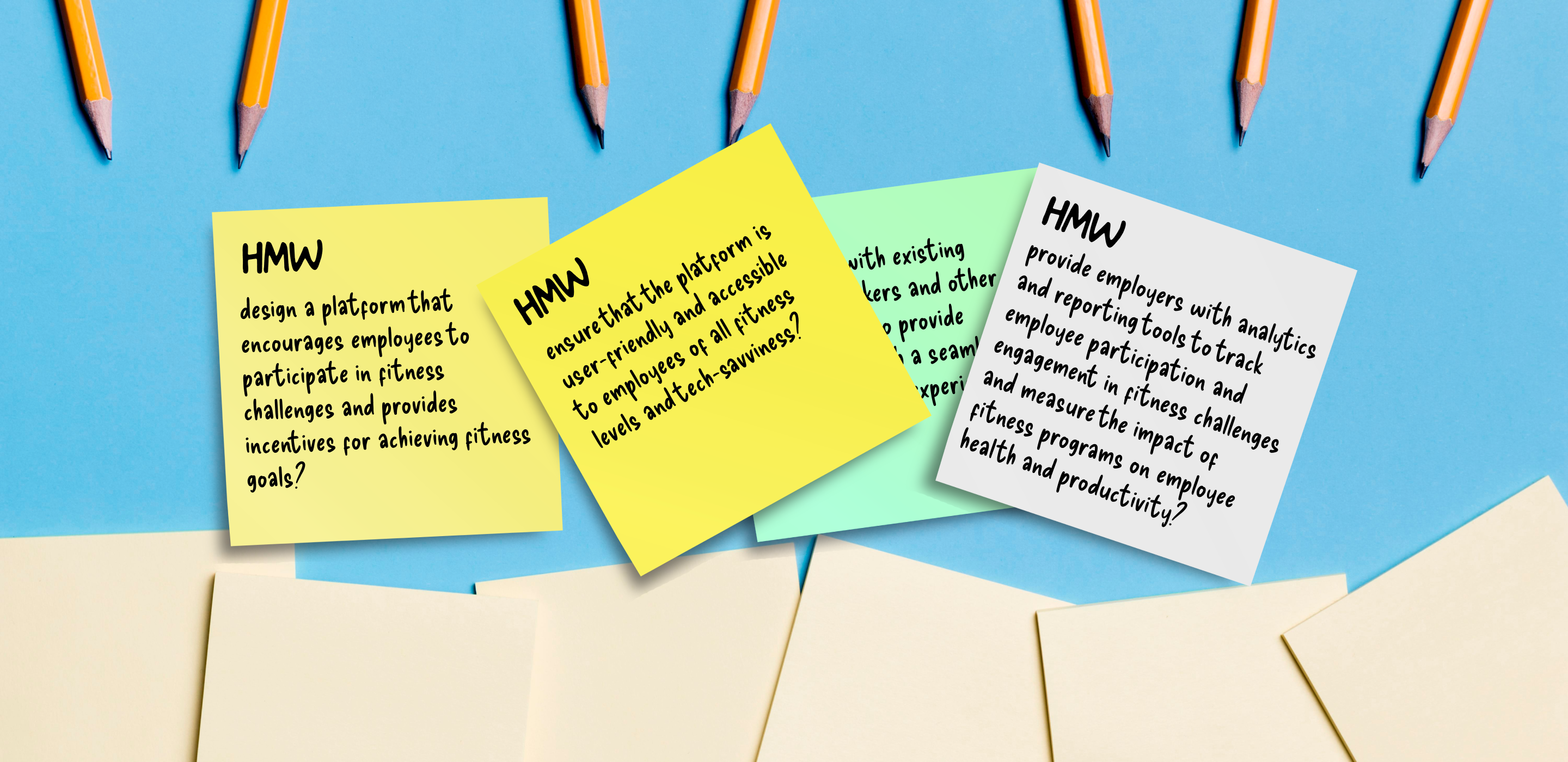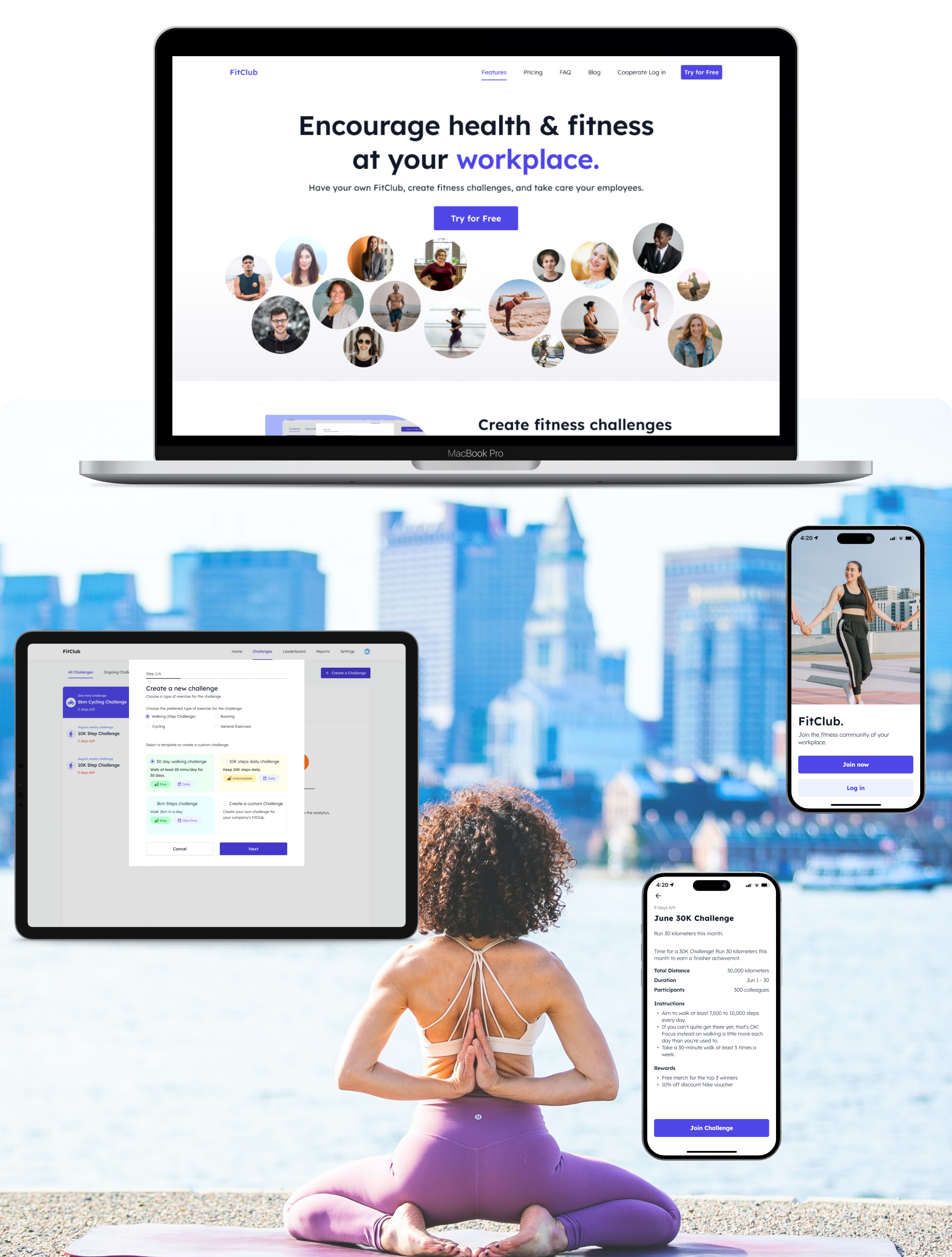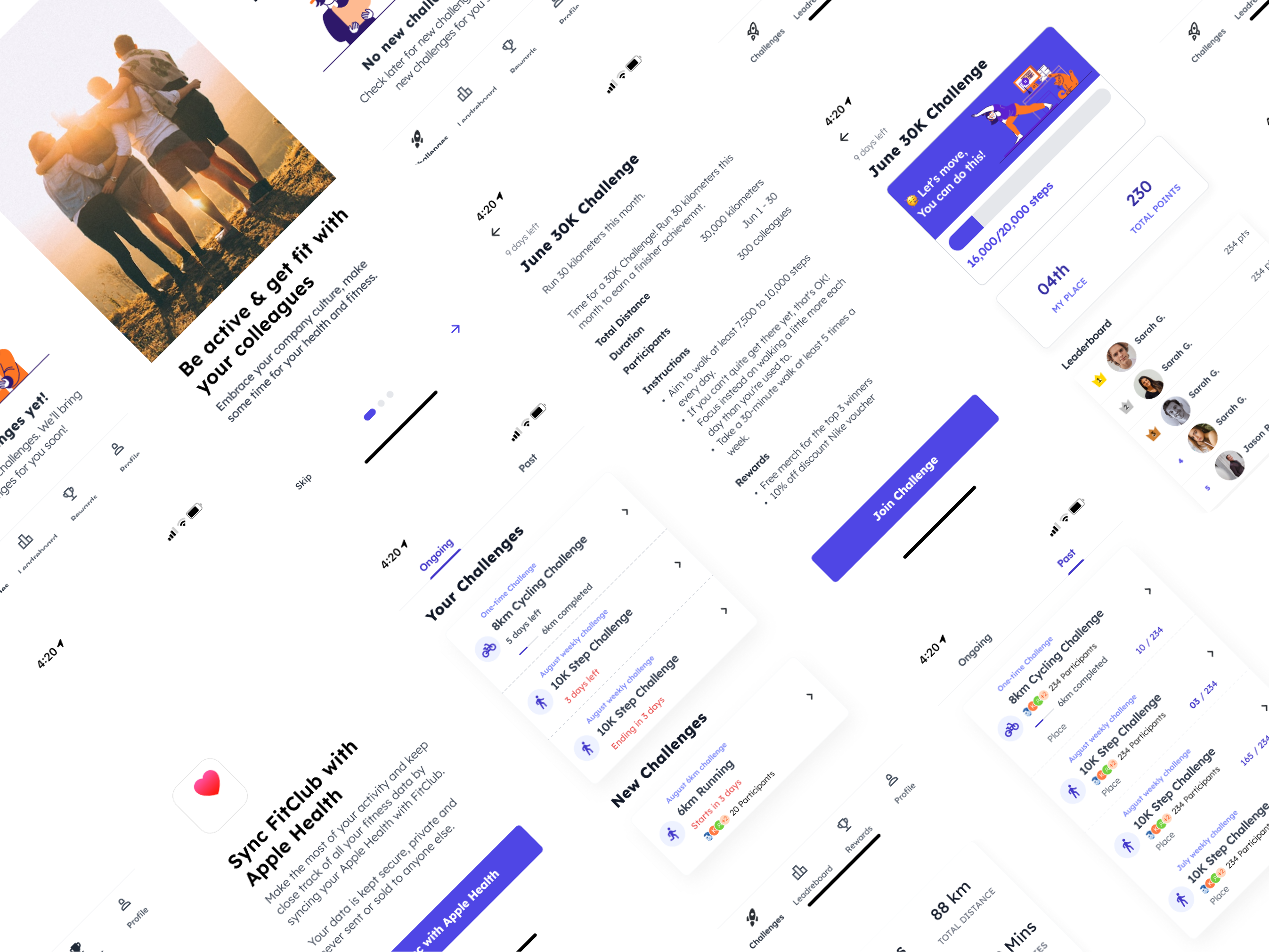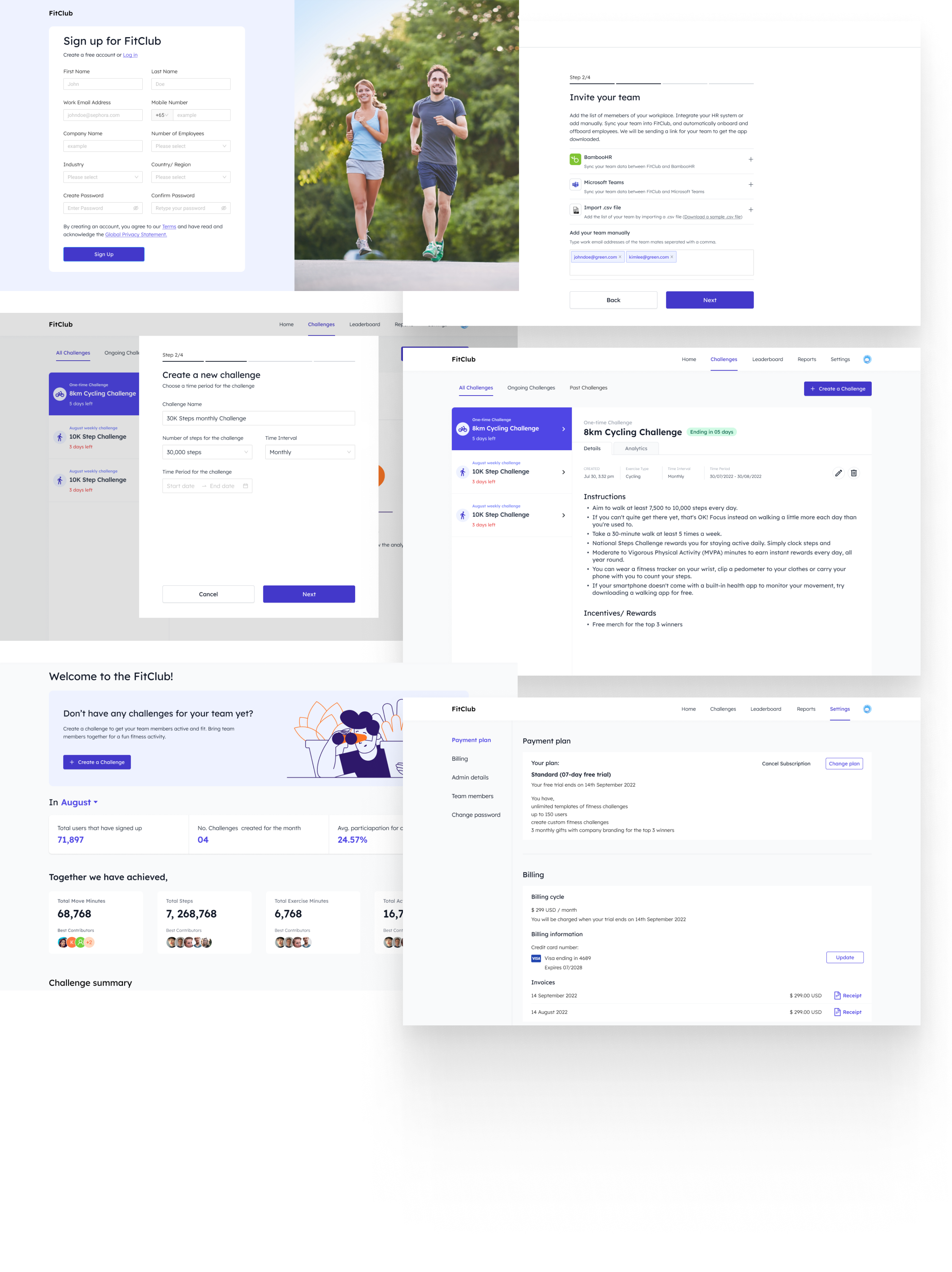About the project
FitClub.work is a B2B SaaS product designed to address the issue of sedentary lifestyles in the workplace. With many jobs requiring long hours of sitting, the lack of physical activity can lead to a range of health problems for employees. fitclub.work aims to encourage physical activity by providing workplaces with a platform that incentivises employees to engage in fitness activities. This is a project I contributed end-to-end design through research, wireframing, visual design, prototyping, usability testing, and cross-team collaboration.
Role
Tools: Pen & paper, Figma, FigJam, ClickUp, SendGrid
Overview
In today's workplace, sedentary jobs have become increasingly common, leading to a rise in health problems such as obesity, cardiovascular disease, and diabetes. According to the World Health Organization, physical inactivity is one of the leading risk factors for noncommunicable diseases, contributing to an estimated 3.2 million deaths each year. It is employers’ responsibility to promote workplace wellness and encourage employees to engage in physical activity. By implementing fitness challenges and other wellness programs, we can foster a culture of health and fitness that not only benefits individual employees but also leads to improved productivity and reduced healthcare costs for employers.
As the sole UX/UI designer for fitclub.work, I worked closely with cross-functional teams to design a platform that addressed the needs of both employees and employers. Our solution was a gamified fitness challenge that encouraged employees to participate in physical activity throughout the day. Employees could earn points by completing fitness activities, such as walking or cycling, and track their progress through a leaderboard, and get incentivised at the end of a fitness challenge or a month.
PRODUCT REQUIREMENTS
Easy to use web app
An easy to use web app for the employers to create fitness challenges in the workplace
Easy to use mobile app
An easy to use mobile app with a universal design for the employees
Customizability
The product must be customizable to meet the needs of different workplaces, allowing employers to tailor fitness challenges and incentives to their specific workforce. This can include features such as customizable goals, challenges, and rewards.
Gamification
The product must incorporate a gamified element to incentivize employees to engage in physical activity. This can include features such as points, badges, and leaderboards.
Integration with fitness trackers
The product must be able to integrate with popular fitness trackers such as Fitbit, Apple Watch, or Garmin, allowing employees to track their fitness progress and earn rewards for achieving fitness goals
Analytics and reporting
The product must provide employers with analytics and reporting tools to track employee participation and engagement in fitness challenges. This can include metrics such as participation rates, activity levels, and the impact of fitness challenges on employee health and productivity.

DESIGN
After finalizing our design solutions, we created visually appealing high-fidelity mockups and prototypes using Figma that aligned with Pawjourr's brand guidelines. We iterated on the design until we achieved the desired user experience. To validate our design solutions, we conducted usability testing with a group of users and observed their interactions with the platform. We also gathered feedback on the new features and design changes. Additionally, I took a mobile-first approach and ensured the designs were responsive for optimal user experience on all devices. Please note that the designs showcased below represent only a small portion of the entire Pawjourr platform. As a large-scale SaaS platform, Pawjourr encompasses several products and features that cater to the needs of pet owners and creators alike. While these designs provide a glimpse into the UX/UI design process, they do not cover the entire range of features and products offered by Pawjourr.
Sweat the stress away.
Healthier employees, healthier business.




WORKING WITH DEVELOPERS
I worked closely with two engineers to develop the designs for MVP. I explained how this work using a prototype and explain where micro interactions are needed. I also encouraged them to look into ant design for the web app and flutter components for the mobile app and helped them finding the right components that makes their work easy.
TAKEAWAYS
Since we didn’t had much users at the beginning, most of the ux work was based on assumptions and when doing usability tests I learnt that it’s very important to do thorough user research to understand the needs and preferences of both employers and employees in the workplace wellness space. I designed a comprehensive ecosystem of FitClub products, including a marketing landing page, a web app for employers, and a mobile app for employees, to provide a seamless experience for all users. To do that, I had to design for accessibility and inclusivity to ensure that the product can be used by individuals with varying levels of tech-savviness and physical abilities. Also, I learned to utilise a cohesive design system to maintain a consistent and recognisable brand identity across all platforms. When using hotjar for website heat-maps and analytics, it emphasized the importance of Implementing an iterative design process with frequent testing and feedback to ensure that the product meets user needs and stays up-to-date with changing trends and technologies. Since we didn’t had much users at the beginning for usability testing, it showed the importance collaborating with cross-functional teams to ensure that design decisions align with business goals and technical constraints.